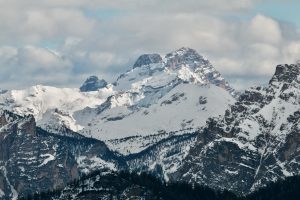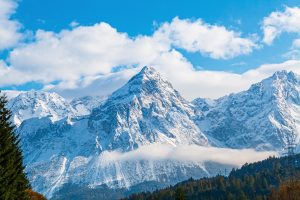

Italy is home to some of the most breathtaking landscapes in Europe, and few places capture this beauty quite like the Alps. Stretching across several countries, including Italy, this majestic mountain range offers visitors a chance to experience the natural splendor of Europe up close. In this article, we will take a journey through Italy’s Alpine region, exploring its history, culture, and natural wonders.
The Alps are a truly awe-inspiring sight. The towering peaks of the Dolomites and the soaring slopes of the Mont Blanc massif create a dramatic backdrop to the charming towns and villages nestled in the valleys below. For centuries, this region has captivated visitors with its stunning scenery, cultural heritage, and outdoor adventures.
One of the most unique features of the Italian Alps is its distinctive blend of cultures. The region is home to a rich mix of Italian, Austrian, and Swiss traditions, which have been shaped by centuries of cross-border trade and migration. This is evident in everything from the architecture and cuisine to the language and customs.
One of the best ways to experience this cultural diversity is by exploring the charming towns and villages that dot the Alpine landscape. From the colorful houses of Cortina d’Ampezzo to the medieval alleys of Bormio, these towns are steeped in history and character. Visitors can wander through the narrow streets, browse local markets, and sample delicious regional dishes in cozy restaurants and cafes.
For those seeking a more active adventure, the Italian Alps offer a wealth of outdoor activities. Skiing is undoubtedly one of the most popular pastimes in the region, with world-class resorts like Cortina d’Ampezzo, Courmayeur, and Val Gardena attracting skiers and snowboarders from around the world. But there is much more to do beyond the slopes, from hiking and mountain biking to paragliding and rock climbing.
One of the most stunning natural wonders in the Italian Alps is the Stelvio Pass. This legendary mountain pass is one of the highest in Europe, winding its way up the eastern side of the Ortler Alps. The road is famous for its hairpin turns and breathtaking views, making it a popular destination for cyclists and motorcyclists alike.
But the Alps are not just about outdoor adventures and stunning scenery – the region is also home to some of Italy’s most celebrated culinary traditions. From hearty stews and sausages to delicate pastries and cheeses, the Alpine cuisine is a delicious reflection of the region’s unique cultural blend. Visitors can sample local specialties like polenta, speck, and bresaola in traditional mountain huts, or enjoy gourmet cuisine in Michelin-starred restaurants.
As we journey through the Italian Alps, it’s impossible not to marvel at the region’s rich history and cultural heritage. From the Roman Empire to the Renaissance, this region has played a key role in shaping European history. Today, visitors can explore ancient castles and fortresses, admire frescoes and artwork by some of Italy’s greatest masters, and immerse themselves in the vibrant local traditions that have been passed down through generations.
As we wrap up our journey through the Italian Alps, here are a few fun facts about this spectacular region:
- The highest peak in the Italian Alps is Monte Bianco (Mont Blanc), which stands at a towering 4,810 meters (15,781 feet).
- The region is home to several UNESCO World Heritage Sites, including the Dolomites and the prehistoric pile dwellings around the Alps.
- The Italian Alps are famous for their thermal springs, which have been used for their healing properties since Roman times. Today, visitors can enjoy relaxing spa treatments in towns like Bormio and Merano.
- The Italian Alps have been a popular filming location for many movies over the years. The stunning natural scenery has provided a backdrop for everything from classic Italian films to Hollywood blockbusters. Some of the most famous movies filmed in the region include The Pink Panther, The Italian Job, and The Sound of Music.Another interesting aspect of the Italian Alps is its wildlife. The region is home to a diverse range of species, from majestic deer and chamois to rare birds of prey like the golden eagle. Visitors can explore nature reserves and national parks like the Gran Paradiso and Stelvio to catch a glimpse of these magnificent creatures in their natural habitat.Finally, no trip to the Italian Alps would be complete without a visit to the Aosta Valley. This picturesque region is home to some of the most stunning mountain scenery in Europe, with towering peaks, crystal-clear lakes, and lush green valleys. Visitors can explore medieval castles, ancient Roman ruins, and charming mountain villages, or simply soak up the beauty of the natural landscape.
In conclusion, the Italian Alps are a true gem of Europe, offering visitors a chance to experience the natural beauty, cultural diversity, and rich history of this magnificent region. Whether you’re seeking outdoor adventure, culinary delights, or simply a chance to relax and unwind, the Italian Alps are the perfect destination. So why not plan your next adventure to this incredible part of the world and see it for yourself?
